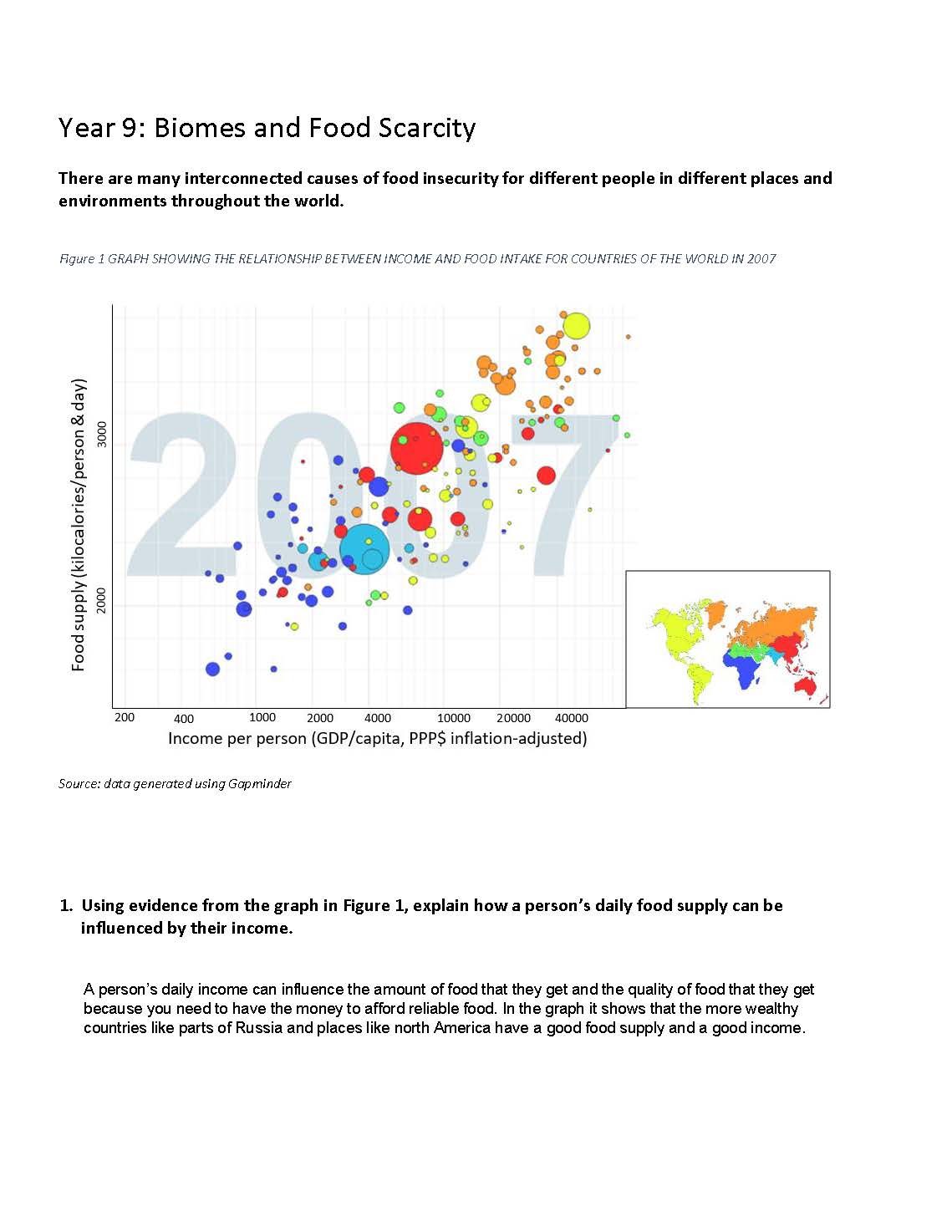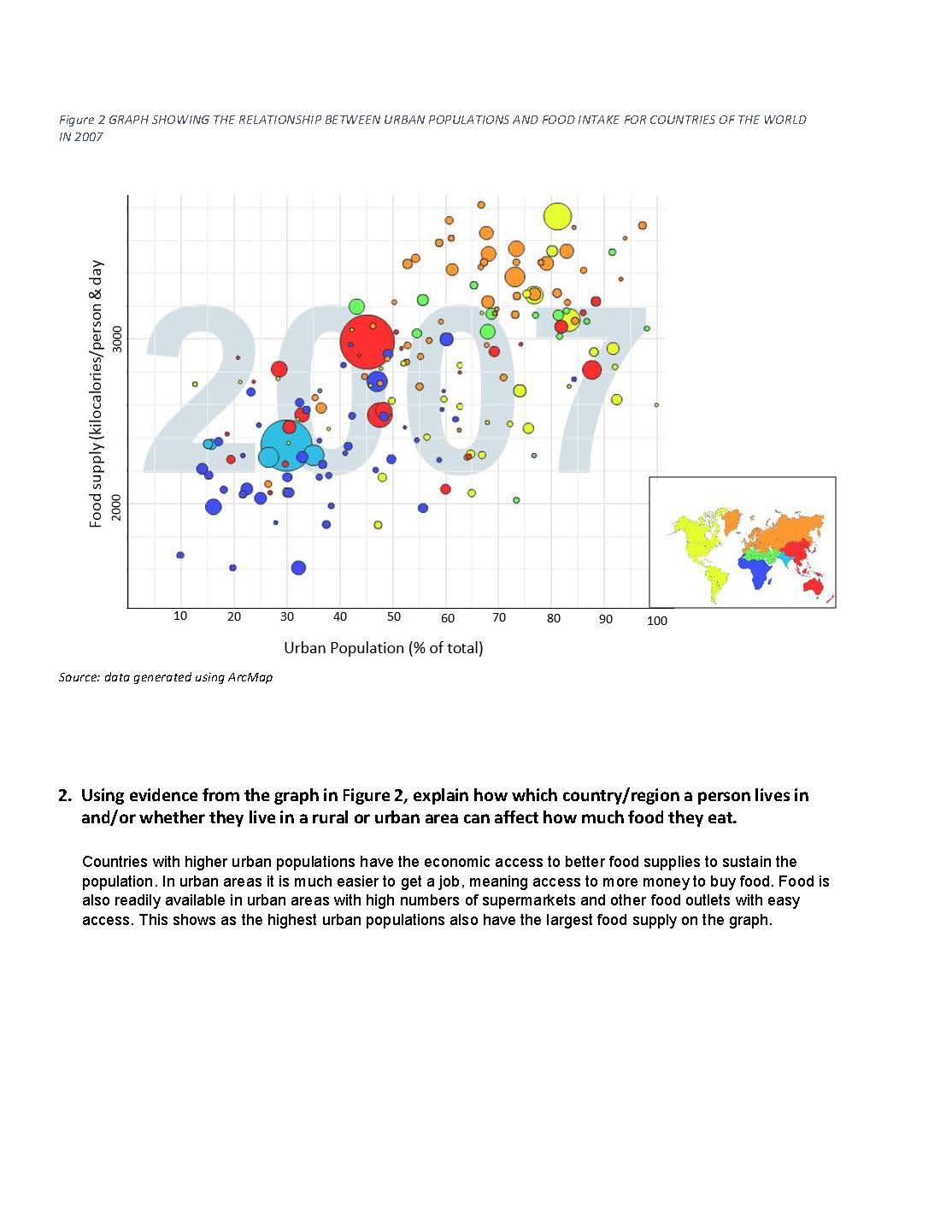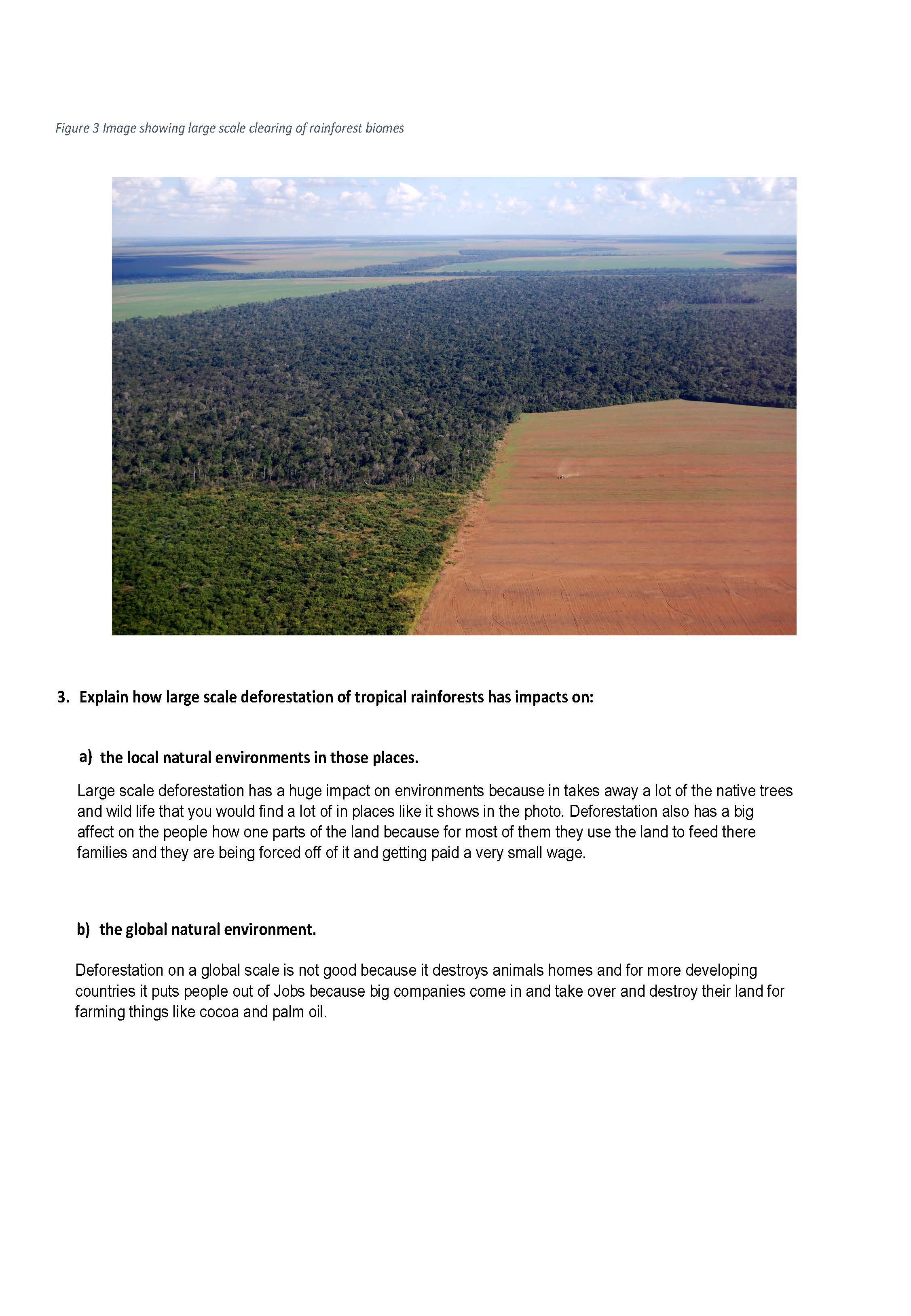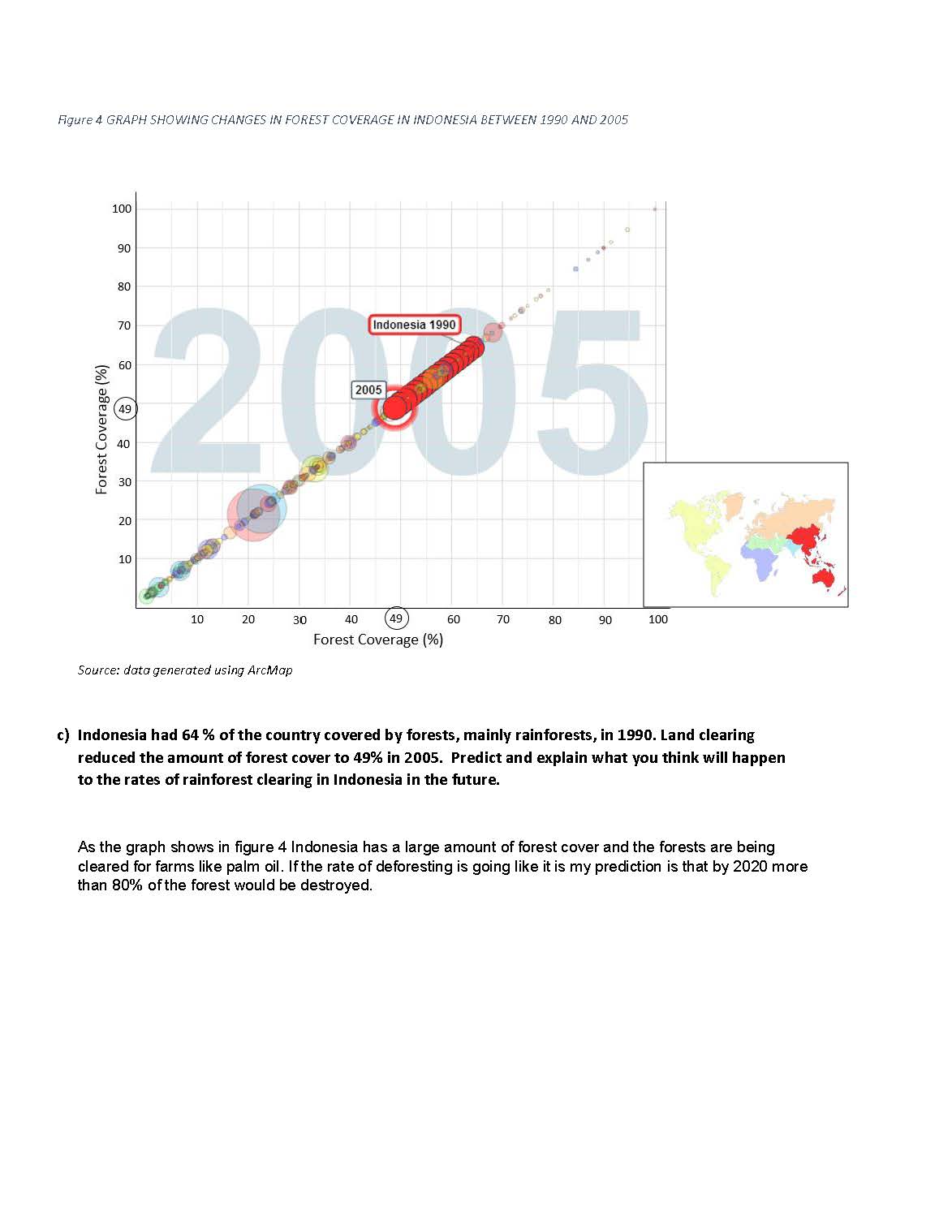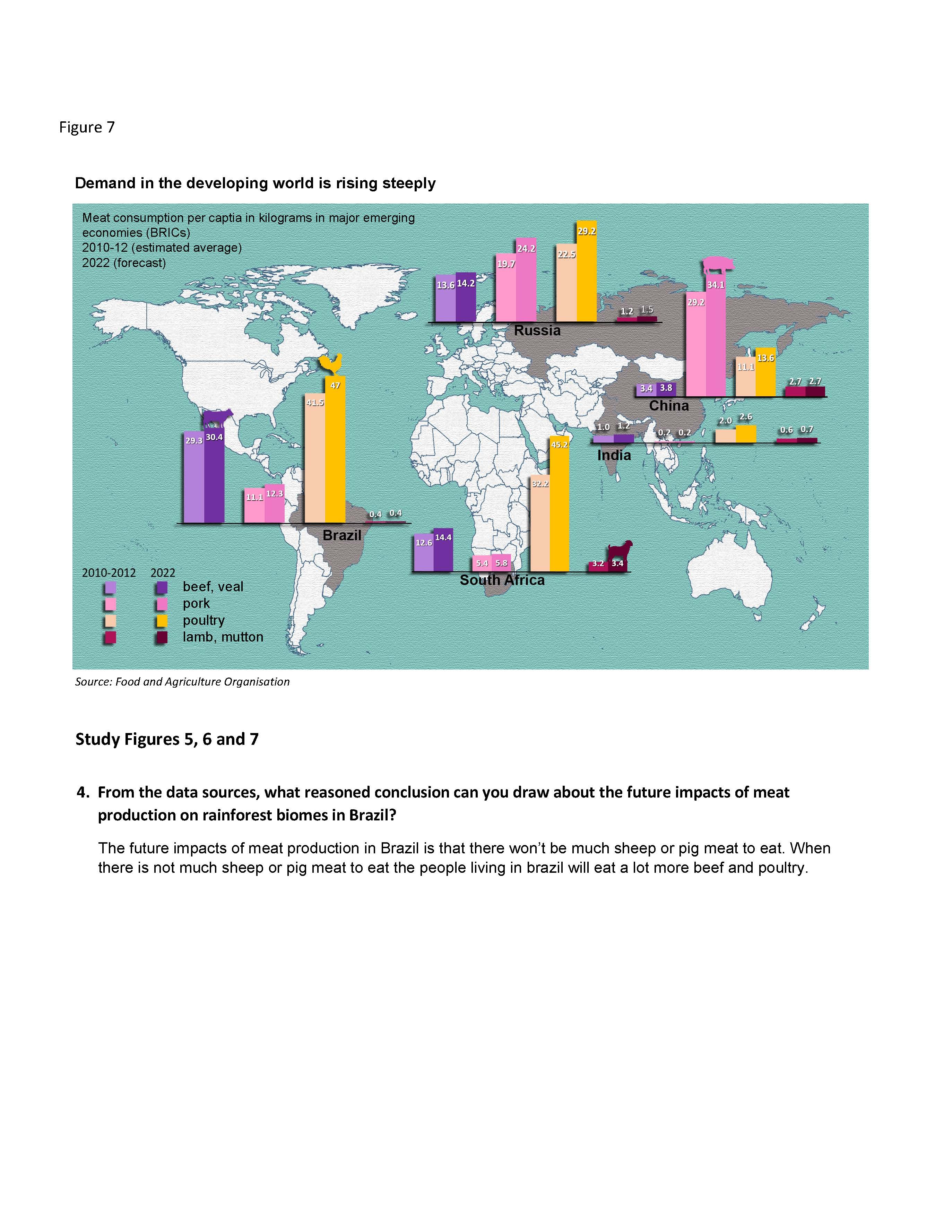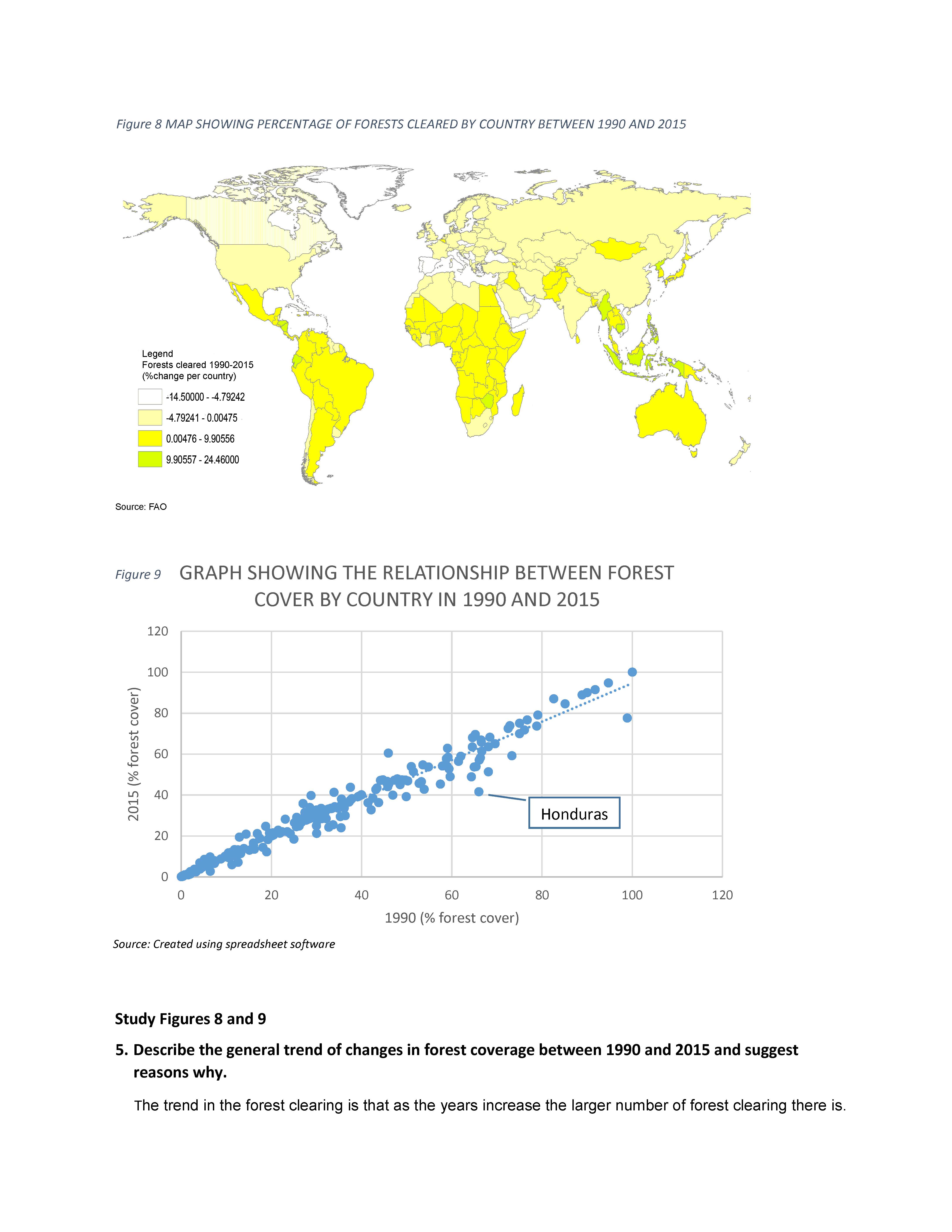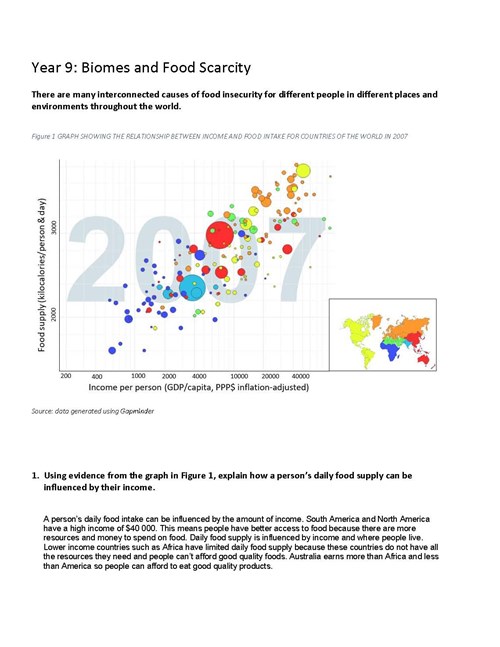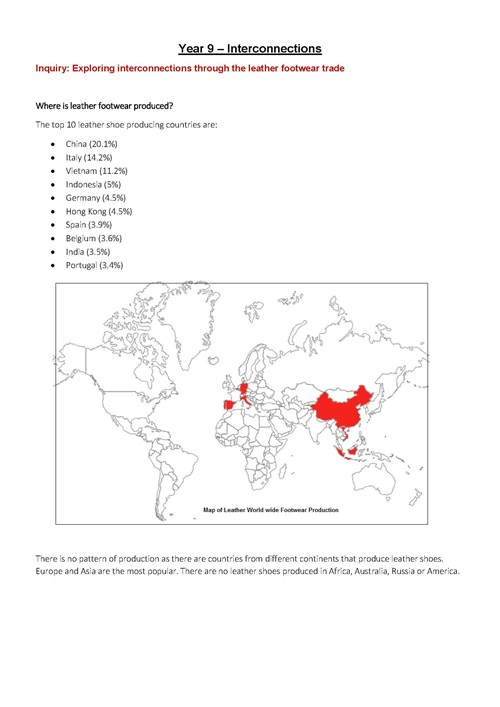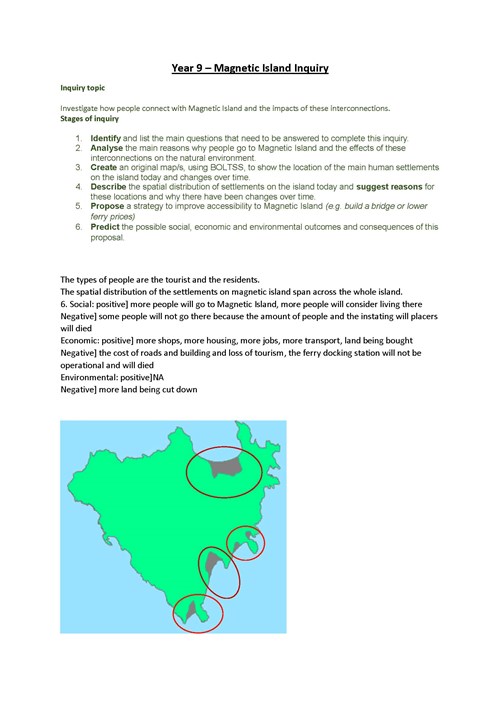Data analysis: Food scarcity
Summary of task
Over a period of six weeks, students examined the biomes of the world, how humans have altered environments for food production, and the main challenges of providing food security. Various case studies were used from Australia and other parts of the world throughout the unit of study. Students were assessed under supervised conditions in class over three 40-minute lessons. They were required to interpret a range of data and information and provide short responses to a demonstrate their skills and understandings. Finally, the concept of food miles was explored to understand how local human activity influences global systems. Students were asked to create a presentation proposing local actions that could reduce the impact of food miles, and evaluated the sustainability of their strategies from economic, environmental and social perspectives.
